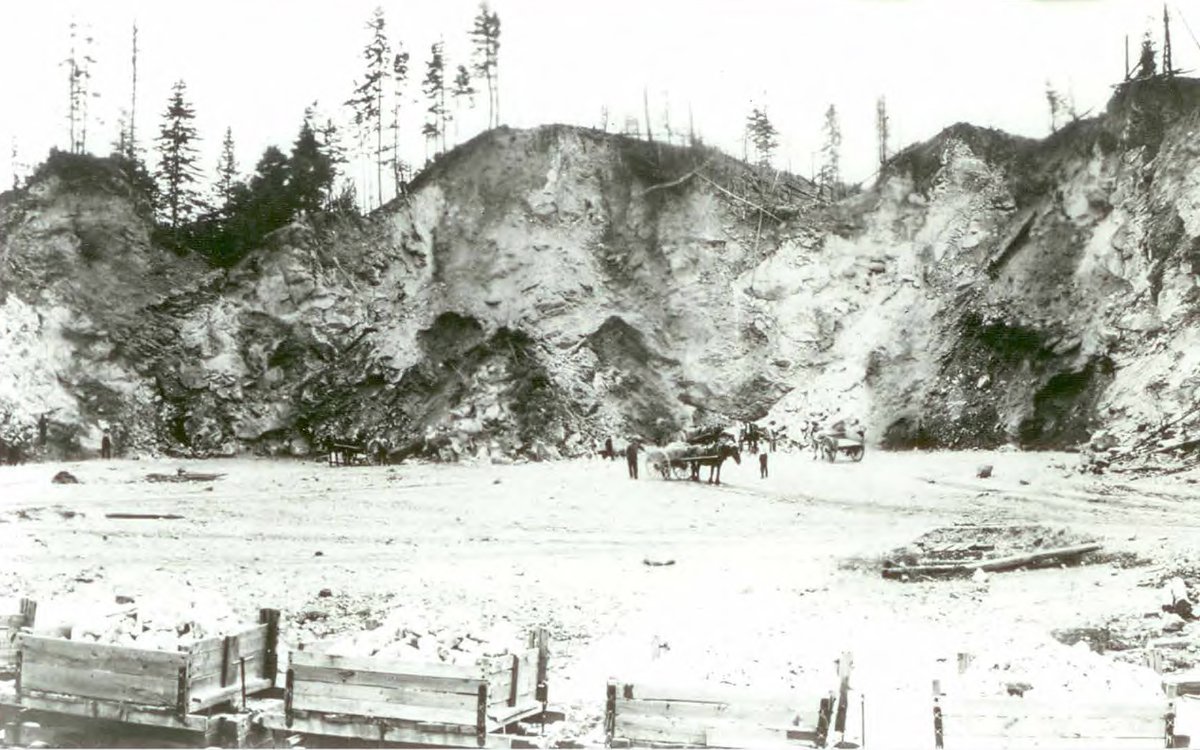#NovaScotia has historically been one of the world’s largest suppliers of #gypsum. The mine in #Milford is the world's largest surface gypsum mine. Gypsum’s main use is as an ingredient in wallboard.
#nspoli #cbpoli #NS #CB #capebreton
@KeithIrvingNS @mmillershubie @EastHantsNS


#nspoli #cbpoli #NS #CB #capebreton
@KeithIrvingNS @mmillershubie @EastHantsNS



When #gypsum mining started in #NovaScotia in the late 1700s, it was done by farmers who extracted blocks from their farms, hauled it by horse and cart to #Windsor and sold it to local traders. It was then exported to the US east coast for use as fertilizer.
#nspoli #ns

#nspoli #ns


#Gypsum fixes alkaline (high pH) soil. US inventor #BenFranklin learned this from the French and brought the idea to the US in 1785.
#nspoli #cbpoli #NovaScotia #CapeBreton #NS #cb
#nspoli #cbpoli #NovaScotia #CapeBreton #NS #cb

Wallboard (aka drywall) was invented in the United States in 1918. Plaster made from #gypsum was sandwiched between two sheets of paper and within ten years, large scale production was revolutionizing the construction industry.
#nspoli #cbpoli #NovaScotia #capebreton #NS #cb
#nspoli #cbpoli #NovaScotia #capebreton #NS #cb

This changed the #gypsum industry in #NovaScotia as vertically-integrated, international companies brought economies of scale and more advanced equipment to the province. Wallboard also meant that most gypsum would now be used for construction purposes, not fertilizer.
#nspoli
#nspoli

Safety is the main reason #gypsum is used in wallboard. It contains a significant amount of water at the molecular level and is therefore fire resistant. 100 pounds of gypsum rock contains approximately 21 pounds of water.
#nspoli #cbpoli #novascotia #capebreton #NS #CB
#nspoli #cbpoli #novascotia #capebreton #NS #CB

This is the former #Walton #gypsum quarry in #EastHants, #NovaScotia. It started producing in the 1800s and continued until 1972. Today the quarry, like many other former mines and quarries, is a lovely lake.
#nspoli #cbpoli #capebreton #ns #cb


#nspoli #cbpoli #capebreton #ns #cb



• • •
Missing some Tweet in this thread? You can try to
force a refresh



























